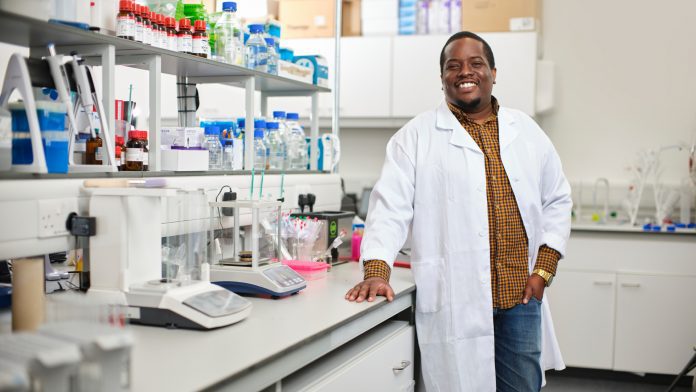
FluoretiQ CEO Neciah Dorh shares his vision to improve antimicrobial resistance (AMR) by developing rapid diagnostics that optimise antibiotic use.
The COVID-19 pandemic has made us acutely aware that bacterial infections can devastate lives, economies and push our healthcare systems to near breaking point. Are we prepared for the next pandemic in waiting?
The AMR crisis
In 2019, there were an estimated 4.95 million deaths associated with AMR, including 1.27 million directly attributable to AMR, compared to 1.9 million COVID-19 deaths just 12 months later. As resistance becomes more commonplace across the world, we are more at risk of routine infections becoming life-threatening and the loss of effective antibiotics can reduce global life expectancy by up to 20 years. It is even more concerning that, unlike COVID-19, the world is woefully unprepared for an AMR infection pandemic.
Whilst government reports and academic journals continue to highlight the sheer magnitude of the problem, investment and innovation appear to lag significantly. AMR carries the same public health and economic risk of COVID-19 yet with only 3% of the drug pipeline which means that it would be near impossible to recover from a pandemic in similar timeframes.
Why can we not simply develop new antibiotics?
The last discovery of a new antibiotic class was Lipopeptides in 1987, the paucity of an active development pipeline is predominantly due to antibiotics being high-risk with low reward. Antibiotics are difficult to develop, have short treatment cycles (days compared to months for chronic condition treatments) and attract low levels of reimbursement, collectively these factors are significant disincentives to pharmaceutical companies. For context, pharmaceutical companies estimate that an antibiotic generates approximately $45m in annual revenues compared to over $1bn in development costs. This is further complicated by increasing healthcare costs and pressures to restrict the dispensing of antibiotics.
70% of AMR deaths across the world are due to resistance to first-line antibiotics and we do not have their replacements in development. We cannot afford to wait for a new influx of wonder drugs.
Diagnostics play a vital role in managing AMR today and in the future
With or without the benefit of a healthy pipeline of new antibiotics, limiting AMR requires a fundamental change in how we view and prescribe antibiotics. It is vitally important that antibiotics are only used when needed, and that the correct antibiotics are prescribed. The necessary change is that clinicians are supported by diagnostics to make the optimal treatment decision from the first consultation. Testing is key, and for a long time, this has simply been impossible to implement.
Today’s process commonly takes days for samples to be taken, tested, and reported by a lab. As a result, clinicians are forced to rely on empirical treatments which result in antibiotic over-use and fuel the rise of AMR.
To promote the safe and sustainable use of antibiotics, diagnostic information needs to be actionable at the point of care. Solutions now exist to provide the accuracy and quality of traditional laboratory: identification, quantification, and susceptibility testing from the first consultation. This strategy preserves the effectiveness of current antibiotics and safeguards the critical few in development.
The need for antibiotic stewardship has never been greater
Given the accelerated pace of AMR, we must adopt better antibiotic stewardship practices. Until policies and economics of antibiotics evolve, rapid diagnostics are the only effective tool in our shared arsenal to ensure that every antibiotic prescription is justified by the evidence.
The effectiveness of antibiotics can be preserved by using diagnostics to provide critical information for suspected bacterial infections:
- Deciding when and if a patient needs antibiotics (rapid detection); and
- Deciding which antibiotic will be the most effective (Antibiotic Susceptibility Testing- AST).
These need to be delivered within minutes, not days.
FluoretiQ: building rapid diagnostics for the AMR crisis
FluoretiQ is building a family of complimentary AST and diagnostic products that radically improve the speed and quality of information available to every clinician. Our products are designed to be fundamental building blocks that improve antibiotic stewardship and support earlier diagnosis, leading to better patient health outcomes.
NANOPLEX®: deciding when and if a patient needs antibiotics
NANOPLEX® is a proprietary technology platform that cuts the time to diagnose bacterial infections from days to just 15 minutes.
NANOPLEX® works by exploiting the behaviours that bacteria use to recognise sugar and bind to cells in our body to establish infection – just like Velcro®. We have designed chemical probes that mimic this process, enabling us to rapidly identify specific bacteria and accurately determine its concentration.
NANOPLEX® enables us to design a whole product line of diagnostic devices commencing with Urinary Tract Infections (UTI), addressing over-treatment and over-use of antibiotics in hospitals and at the point-of-care.
UTI has the second-highest prescription rate of all bacterial infections in primary care, but half of antibiotics are unnecessarily prescribed. This is largely due to asymptomatic bacteriuria – an elevated but benign level of bacteria in the urine, regularly misdiagnosed by dipstick testing.
NANOPLEX® solves this problem by matching the quality of information from laboratory testing and delivering it to the point of care. This enables effective decision making based on evidence-based prescriptions.
SCFI™: deciding which antibiotic will be the most effective
Once an infection has been confirmed, the next step is to determine which antibiotic to prescribe. Due to time delays with existing AST tests, the first prescription is often based on a pre-defined list of antibiotics for a given infection type which is then adjusted three days later based on the patient’s response or AST results. To give our customers a complete antibiotic stewardship solution, we are building a complementary platform to NANOPLEX: SCFI™ (Sub Cellular Fluctuation Imaging) for rapid antibiotic susceptibility testing.
SCFI™ assesses a bacteria’s resistance profile by monitoring the metabolic activity within bacterial cells. By assessing first and second-line antibiotic panels, SCFI™ can identify which antibiotics are likely to be most effective for the patient.
AST products based on SCFI™ minimise the opportunity for bacteria to develop resistance caused by iterative antibiotic use. Clinicians will be able to select the right drug at the first consultation.
SCFI™’s greatest impact will be improved management of primary bacterial infections, which in turn reduces the likelihood of recurring infections. Sepsis (250,000 cases per year) is a high morbidity secondary infection that typically develops from an untreated primary infection, like UTI or pneumonia.
Early diagnosis leads to better patient outcomes
Since the O’Neil report was published, the number of directly attributable AMR deaths had risen 181% and we are exceeding forecasts for AMR to exceed deaths by cancer 15 years sooner than anticipated.
FluoretiQ’s mission is to champion antibiotic stewardship, giving clinicians the tools that they need in hospitals, GP surgeries and community care settings, resulting in superior patient outcomes whilst cutting the time and cost of quality healthcare.
To learn more about our technologies, partnerships and vision please contact j.preece@fluoretiq.com for more information.
Dr Neciah Dorh CEO
FluoretiQ
www.fluoretiq.com
This article is from issue 21 of Health Europa Quarterly. Click here to get your free subscription today.











